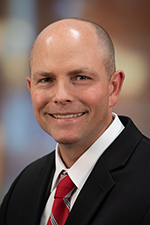Quality Management: Plan, Implement, Track, Improve
This presentation will provide an understanding of the fundamental components of a laboratory quality management plan based on the Plan-Do-Study-Act model. The description and roles of key stake holders in the planning, implementation, maintenance, and improvement stages of total quality management plan is discussed. Lastly, the presentation touches on the implementation of these concepts and reliable tools to monitor elements of the plan, key performance indicators, and improvement initiatives. The principal goal is to provide learners with a framework for improving or establishing and implementing a quality management plan.
Originally published on August 3, 2023
Lecture Presenter
 | Kelly Doyle, PhD, DABCC, FADLM Assistant Professor (Clinical) |
Dr. Kelly Doyle is a medical director of Special Chemistry and Endocrinology at ARUP Laboratories and an assistant professor at the University of Utah School of Medicine. Dr. Doyle received his doctorate degree in medicinal chemistry from the University of Utah. He then completed a clinical chemistry fellowship at the University of Utah School of Medicine and an oncological sciences fellowship at the Huntsman Cancer Institute. Dr. Doyle is board certified and a member of the American Association of Clinical Chemistry Academy. His research interests include clinical application and implementation of mass spectrometry, emerging biomarkers, endocrinology, and laboratory best practices.
Objectives
After this presentation, participants will be able to:
- List the elements of a quality management plan
- Describe key stake holders of the planning, implementation, maintenance, and improvement stages of total quality management plans
- Explain ways to monitor elements of the plan, key performance indicators, and improvement initiatives
Sponsored by:
University of Utah School of Medicine, Department of Pathology, and ARUP Laboratories
 Site Search
Site Search






